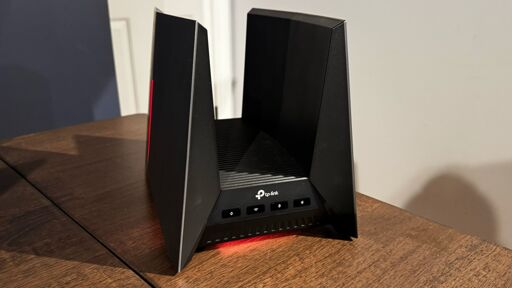WiFi 6/AX has yet to become the “lowest common denominator”, it will be a long time before the majority of the install base switches to WiFi 7, let alone 8.
WiFi 5 is good enough for almost everyone, so most people aren’t exactly going to be in a big rush to upgrade.
Especially with all this focus on high speed, low range signals. What people really want is reliability. But bigger number better I guess
But just think of how fast a device in my rack can wirelessly send data to another device on my rack
How many ghz does wifi 5.6.7.8 run at? What’s the range?
It runs on 2.4 GHz and 5 GHz. WiFi 6E and later use 6 GHz as well. There is some equipment that runs on 60 GHz, but that’s mostly for point to point links. There is also WiFi HaLow that runs on 866 or 915 Mhz for low speed IoT stuff.
The higher the frequency is, the less penetration it has. 5 or 6 GHz signals will have trouble going through a single masonry wall. With clear line of sight and directional antennas, the range can be tens of kilometers.
Most wifi 5 routers have bad security issues, latency, crap QoS and, a lot of Wifi 5 chips don’t have the hardware acceleration needed to be useful anymore, and if they’re not supported by firmware like OpenWRT they’re mostly just e-waste/bot net boxes. I seen wifi 7 routers going for 25$ where i live they don’t have 6Ghz.
I have a Ubiquiti AP along with some Google wifi (pre nest) hubs running OpenWRT all with 2.4 / 5.
And honestly I see no reason to update in the coming years, unless there are some major vulnerabilities around these devices.
I don’t need the fastest wireless speeds or latency, if I need either I’ll sit at my desktop or have a server handle the downloads via Ethernet.
The hardware for Wi-Fi 7 is way too expensive for mass market.
not any more they dropped the 6Ghz for Wifi 7
Are networking companies starting to market “standards” that don’t have an RFC yet again?
Starting implies that they stopped at some point
Actually this is covered by IEEE 802.11bn, though it’s not actually finalized yet:
IEEE 802.11bn, dubbed Ultra High Reliability (UHR), is an upcoming IEEE 802.11 wireless networking standard. It is also designated Wi-Fi 8 by the Wi-Fi Alliance. As its designation suggests, 802.11bn aims to improve the reliability of wireless communications rather than primarily increasing data rates. The standard is projected to be finalized in September 2028.
Wasn’t it reliable before? Maybe they ought to stop going for maximum throughput if they wanted reliable connections…
The present reliability issues come from the ubiquity of WiFi networks, especially residential. If you live in an apartment building you’re surrounded by them, and they’re all trying to use the same limited radio bands. It wasn’t such an issue when the first WiFi standards were designed.
802.11bn is trying to implement some better interference-dodging and de-conflicting, but it requires changes at the hardware level. Without reading the full spec, my guess is that the WiFi device has to do more active listening to other networks in the area and adjust its own transmissions to work around them - maybe even talk to other devices at the protocol level and do some traffic policing (e.g. you go then I go then you go then I go…) to reduce interference.
I see about 150 wireless networks from my home the last time I scanned, and I don’t live in a high density area. The sheer volume of traffic makes it hard to be reliable. Wifi 6 and 7 brought some improvements (on paper; I still use AC) but evidently there’s room for improvement.
Ethernet cables still reign.
In my area, a good homeplug setup reigns over wifi for streaming.
Given Wifi 8 doesn’t intend to bring any speed upgrades of note I suspect those wanting speed will skip it. Wifi 5 users will move to wifi 7 once the prices come down. The skip a generation that happened with wifi 6 will happen again with wifi 8.
Wifi 8 will be a big deal…in the marketing for comcast. I’ve been rocking an old AC access point for years and haven’t even considered replacing it.
802.11 AC “wave 2” was a pretty important step up, using mu-mimo. Then nothing of interest happened with Wi-Fi 6. 6e just added 6ghz, which is good but you hit the problem of cost versus compatibility. There simply are not many 6ghz capable devices yet, so the argument is kind of a wash.
Wi-Fi 7 just dropped, again, with minimal changes.
Wi-Fi 8 I’m sure will be similar.
And all of the extra speed you could get from your fancy pants Wi-Fi 6/7/8/whatever router is pretty much negated by the early 802.11ac (or earlier) devices hanging out on your network, pulling the basic rate down as far as the router will allow so that the majority of the available airtime is spent sending broadcasts and beacons.
I work with technology for a living and honestly, the last two really exciting things I saw in wifi were mu-mimo and 6ghz being opened up. Everything else is iterative changes, and most of the speed advertisements are bullshit. It assumes perfect signal with the widest possible supported channel width with all radio chains engaged. Considering that most devices (mobile devices and laptops particularly) are either 1x1 or 2x2 for radio chains, you’ll never ever see the bandwidth advertised.
Really quickly, you need all the right things in place to get the advertised speed, 160 (or 320) MHz wide channels, good luck finding one that doesn’t have a nontrivial amount of interference on it… A sender and receiver with 3x3 or 4x4, and a clear channel with a low noise floor and no other networks or devices interfering with the signal.
Not only that, but the advertised speed is an aggregate of all of the radios at once, so rinse and repeat for each supported band.
You could go to a lot of effort to achieve all of this by basically turning your house into a Faraday cage, but even that’s not perfect and the stuff inside the house is still going to cause interference… Or you could settle for lower single link performance and just… Get a handful of access points so that the load is spread out and no single node is handling too much traffic.
I’ve been working in tech too long.
I guess it has value for renters who can’t run wires. We’re probably just in a category of people who will hardwire something if bandwidth/latency matters
You see, people in rentals have more reason to want to run wires, because usually the wireless airspace in rentals is more saturated than other locations.
There’s more interfering devices and networks in an apartment buildings just simply due to the density of people. Everyone wants/needs their own Wi-Fi, and because of the relatively limited bandwidth available on all the bands, you’re very likely to be stomping on someone else or have them stomp on you.
I actually knew a guy who took the time to hack into all of his neighbors Wi-Fi networks to change everyone’s wireless channel settings so that he would have a clearer Wi-Fi channel for himself. This was back in the mid to late 2010s some time. That person has since relocated, and they never had any malicious intent for the people they “hacked” into. Either way, the fact that he felt like he needed to do it is the point. There’s a lot of networks and a lot of interference in those situations.
The irony is that if everyone put up a couple of access points at relatively low power each, then they would interfere less with their neighbors, and with their neighbors doing the same, they would be interfered with less, and everyone would have a better time with it. I don’t think I’ve met someone besides myself, who didn’t buy the biggest and most powerful Wi-Fi router they could, and crank the amplitude up to 11 just to push signal through walls and overpower the signals coming from their neighbors. With everyone doing this, is a race to see who has the most powerful Wi-Fi to drown out everyone else. These two ideas are in direct conflict with eachother.
I ran two wireless N access points when I lived in an apartment. I identified pretty early on that there was a wet wall in the middle of my unit, in the kitchen, which sat between the bedrooms and the living room. The washroom had a different wet wall, and that was in the corner of the unit, so no problems there. I basically placed one access point on each side of the wet wall, one in the living room, the other in the bedroom, and enabled all of the roaming features I possibly could. I didn’t really ever notice any trouble switching between access points on my phone while moving around the place, so the two acted as a single network, and I never had an issue with dead spots. The system I used also monitored channel usage, and would change the wifi channels if the channel got busy, so I didn’t really have any trouble with people interfering with me. It wasn’t the fastest, but neither was the Internet, we only got about 50mbps service there.
By all accounts, apartments should be the one place that needs alternatives the most, but I have yet to find any apartment that has Ethernet built in.
This is all true but I guess I was more thinking who would the market would be for faster short range speeds more than who would actually benefit
wifi windows edition
Im still on my Orbi setup from 2016 and desperately would like to get off them, but the things I want cost an absurd amount of money… I thought Orbi was bad when I got them and now I want a cheaper company but everything is just so expensive I can’t. But yeah the one ive been looking at is wifi 7. To bad the only devices that may ever support it are our phones.
IDGAF. No way I’m using a T-P Link router.
Why not? Do you might giving a quick note about why not tp-link? I am doing the research to build my own modem (on the way to self-hosted - which is a LOOONG way away) but was looking at tp link network card as part of the build.
Their routers have been known to have security issues and the manufacturer routinely drops support for 1-2 year old routers. Some mitigate this by flashing openwrt instead of the stock firmware.
None of this applies to a NIC so you are fine
Right on. Thank you!
In WiFi 8 is stable and feature rich WiFi 7. Think I’ve it as WiFi 7 V2.0. For me, upgrading from 6 to 8 isn’t much but will finally do a full refresh with it and will be my standard for a long time.




